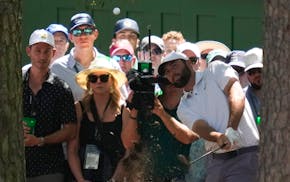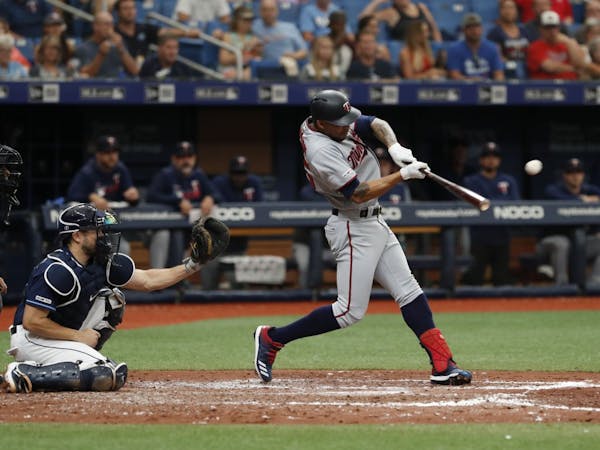Nothing in sport feels so magical as a winning baseball team, because with a winning baseball team timing and luck can matter as much as talent. The broken-bat bloop can trump the 500-foot home run, or the Hall of Fame fastball. Just ask Luis Gonzalez and Mariano Rivera.
The 2019 Twins have built the best record in baseball by becoming greater than the sum of their paychecks, eliciting comparisons to the 2001 Twins, who, for four months, became the game's best story.
Those Twins started the season 14-3, controlled the division for most of the season and held a share of first place as late as Aug. 11 before succumbing to Cleveland's charge — all while surviving contraction threats from their owner, Carl Pohlad.
That team ended a streak of eight straight losing seasons that led to fan apathy and Pohlad's threat to kill the franchise. But the 2001 Twins should not be the model for this year's team. The 2001 Twins went 71-74 after their hot start.
The 2019 Twins are similar to the 2001 team in that they are bringing joy back to the local ballpark, but there is a better precedent for this team's success: the 2006 Twins.
What we are seeing in 2019 is the best baseball the Twins have played since the last two-thirds of the 2006 season.
The 2006 Twins were loaded with high-end talent, yet on June 7 they were 25-33, 11 ½ games out of first.
They would go 71-33 — a .683 clip — the rest of the way to win the division on the last day of the season.
As of Sunday, the 2019 Twins are 39-18 (.684).
The 2006 Twins had a Gold Glove center fielder who hit for power in Torii Hunter. His OPS was .826. Byron Buxton is a Gold Glove center fielder who, like Hunter, is all too willing to ram fences. His OPS this season: .832.
Buxton is faster, and an even better fielder than Hunter. Hunter had a more accurate arm and hit for a bit more power, but their similarities remain remarkable: First-round draft picks out of southern high schools who took years to learn how to hit big-league pitching.
The 2006 Twins had a Latin-American ace in Johan Santana. Jose Berrios plays that role in 2019.
Each team had a surprise lefthander. Francisco Liriano was a throw-in in the trade that sent A.J. Pierzynski to San Francisco. In 2006, he had a 2.16 ERA before the injury that would derail his career. Martin Perez was a low-budget free-agent signing. His ERA was 2.95 after his first eight starts.
Both teams had players who doubled as mascots. In 2006, it was the buddy comedy of Mike Redmond and Nick Punto, the wise backup catcher who performed naked walks and naked pullups and mentored the affable Punto. In 2019, it's an all-inclusive package named Willians Astudillo who is the Twins' endearing backup catcher and infielder. He has not, to our knowledge, resorted to nudity.
The 2006 Twins signed a veteran second baseman, Luis Castillo. The 2019 Twins signed veteran second baseman Jonathan Schoop.
The 2006 Twins had a young, talented right fielder, Michael Cuddyer, who broke through with his first powerhouse season. The 2019 Twins are getting similar production from Max Kepler.
The point here is not that these teams are identical, or that the 2019 Twins are doomed to the same fate: A first-round playoff loss to an inferior team (the 2006 Oakland A's, who seized a wild-card berth after winning 85 games).
The point is that for the last 104 games of the season, the 2006 Twins played better than any Twins team since the 1991 World Series champion, and the 2019 Twins are playing just as well.
Both teams offered endearing characters, too. Asked why jaded Minnesotans should invest emotionally in his club, manager Rocco Baldelli said: "We have guys who are passionate about what they do. They play with exceptional energy and effort every single night. And we have a lot of really good ballplayers on this team. And if you like rooting for good players who are also good people, then I think this is a good group to root for."
Whatever follows, these are moments, and months, to savor.

Souhan: Why Tiger Woods should keep swinging
Souhan: Scheffler wins Masters again, shows what makes him special
Morikawa falters in final round at Masters

Keeping up with the Joneses who helped design Augusta National's classic back nine



